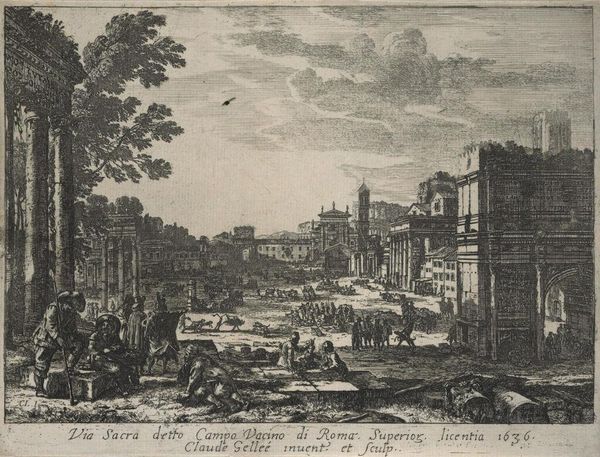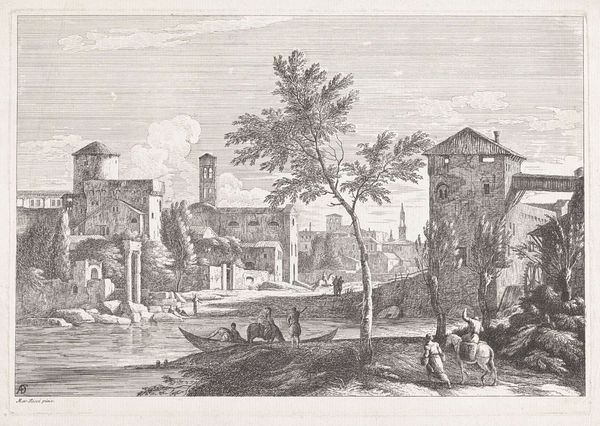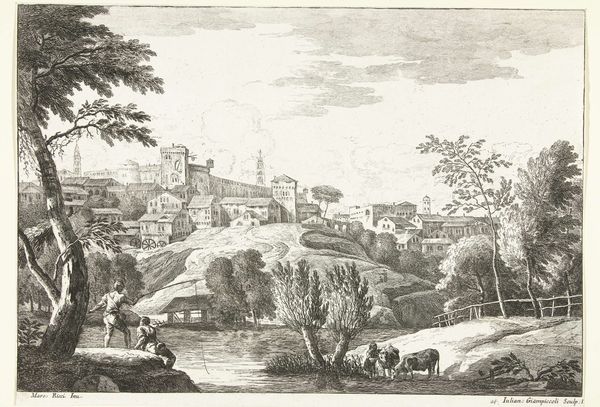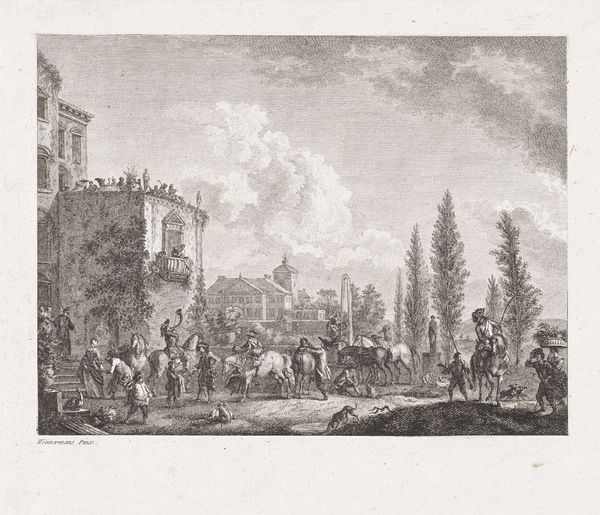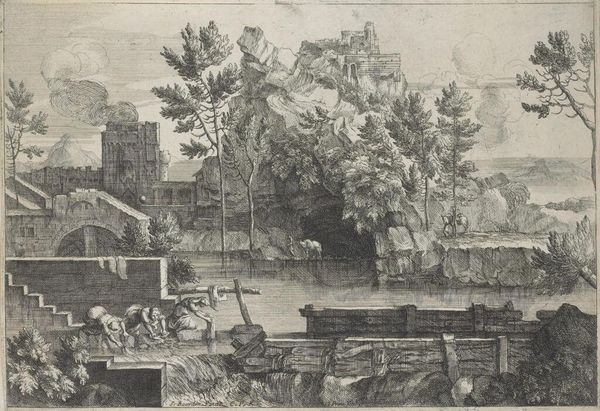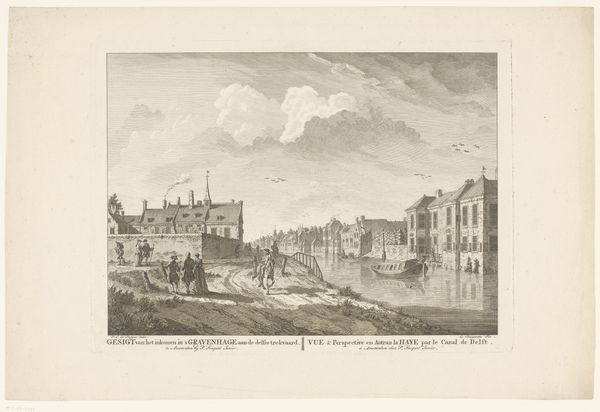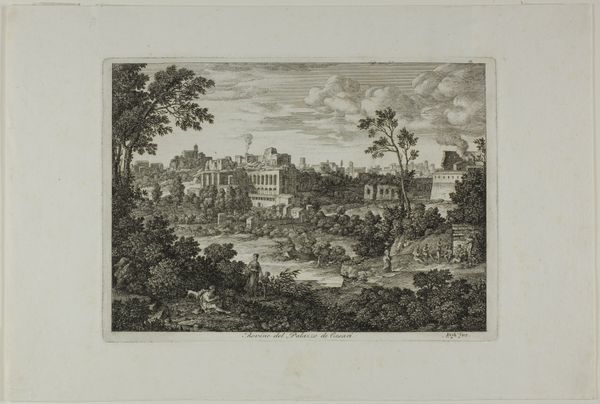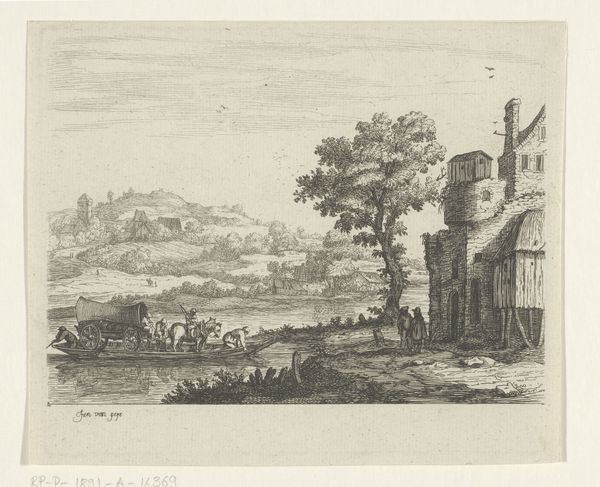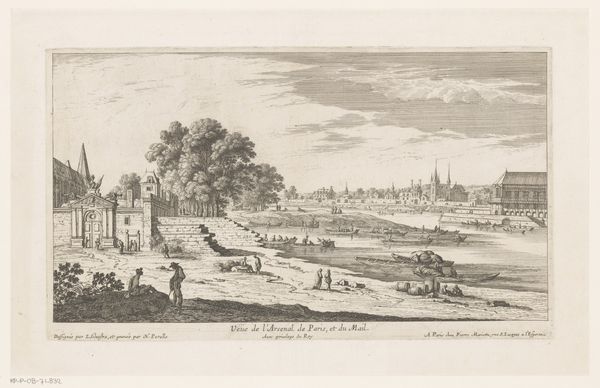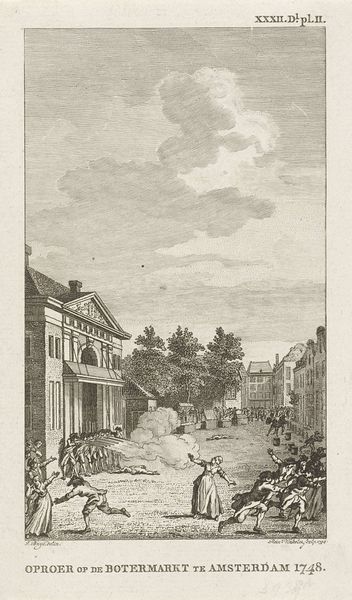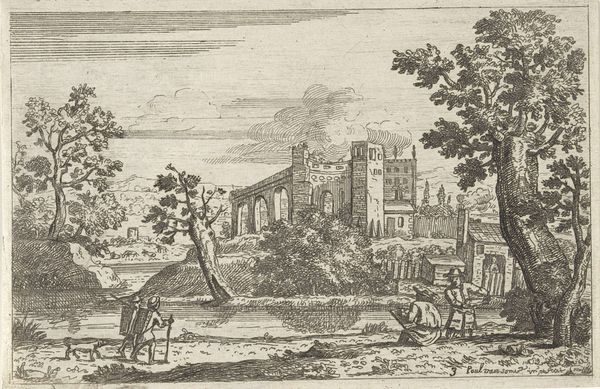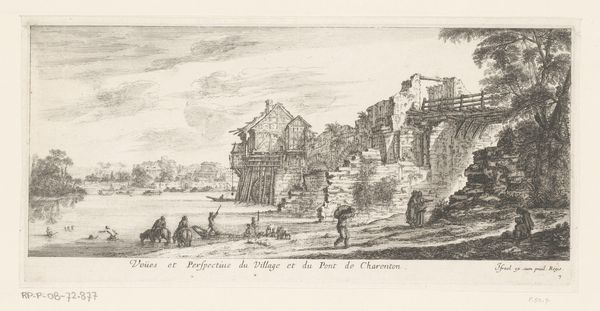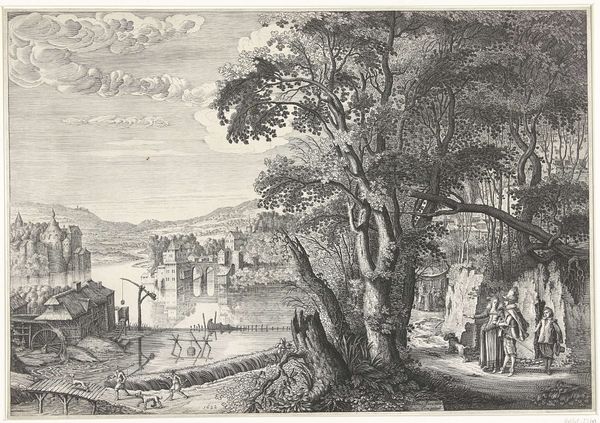
print, etching
#
baroque
# print
#
etching
#
landscape
#
classical-realism
#
cityscape
#
history-painting
Dimensions: height 198 mm, width 262 mm
Copyright: Rijks Museum: Open Domain
Curator: Standing before us is "Forum Romanum te Rome," an etching created between 1636 and 1637 by Claude Lorrain, found within the Rijksmuseum's collection. Editor: My first impression is one of melancholy, a ghostly rendition of past glory. There's a stillness, despite the suggestion of bustling activity. The etched lines feel almost like faded memories. Curator: Absolutely, that melancholy intertwines directly with the sociopolitical moment. Consider Lorrain's position; a Frenchman, captivated by Rome's visual and historical power, yet observing it under shifting powers and amidst social stratification. His work is never a straightforward depiction, it’s loaded with the awareness of colonial implications. Editor: And this echoes through the symbolic weight of ruins. Columns, arches—broken fragments alluding to a grandeur that is irrevocably past. But ruins also invite reflection, a visual memento mori urging us to contemplate time's passage. Note the everyday figures dotted about the Roman Forum: have the contemporary locals become so integrated with it as to ignore the symbolic power the artwork suggests? Curator: Precisely. And those figures you’ve mentioned become a critical point of entry. They remind us this isn’t just about aesthetic appreciation. This landscape reflects social hierarchies—those who inhabit history versus those consumed and dictated by it. It speaks of privilege and dispossession as much as classical beauty. There is always a tension between Lorrain’s vision of idyllic classical vistas, and the socio-economic reality. Editor: Yes, the composition—light filtering through the architectural remains—adds a layer. Light often symbolizes knowledge, enlightenment… Yet, here, it illuminates fragments, highlighting what’s missing or forever changed. Is Lorrain, through his artistic practice of memory building, reflecting that classical antiquity, as reinterpreted by powerful artists of the Renaissance and the Baroque periods, contains an unattainable value? Curator: He encourages us to face an inevitable dialogue on such classical values and history itself, asking: Whose golden age are we really mourning? This work serves as a prompt to dissect how power narratives shape our perceptions, revealing complexities often whitewashed by romanticism. Editor: This dialogue between past and present, splendor and decay is a crucial reminder about time's impact. Lorrain encapsulates not just the aesthetic grandeur, but a deeper meditation of mortality, power, and remembrance. Curator: An engagement with the lasting tensions present when legacies are physically undermined but psychologically prevail and perpetuate within an every changing social arena.
Comments
No comments
Be the first to comment and join the conversation on the ultimate creative platform.
